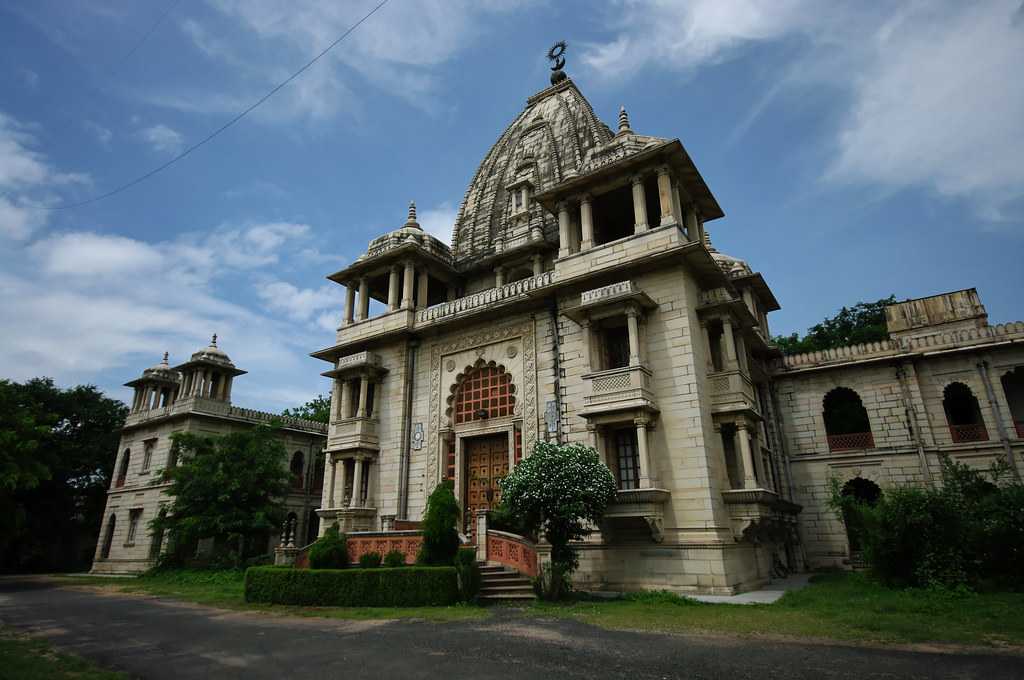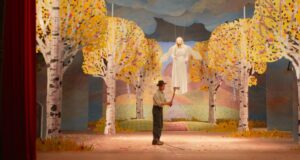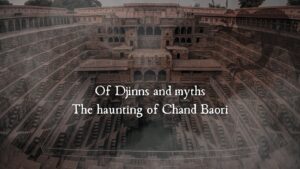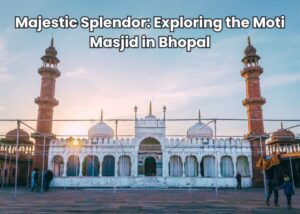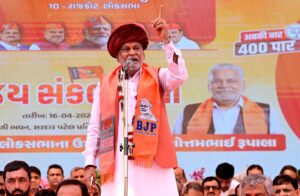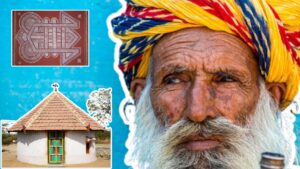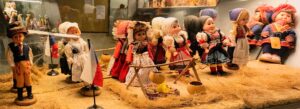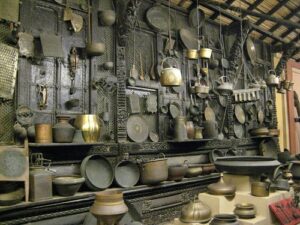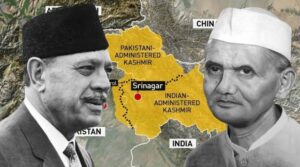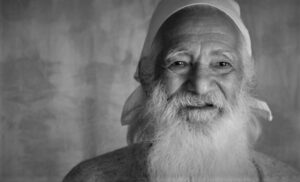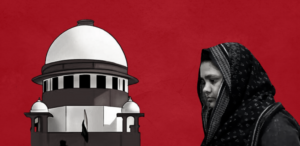Are you passing by the picturesque Vishwamitri Bridge towards Raopura? Look left and spot this striking temple of fame known as Kirti Mandir. Built in 1936 by Maharaja Sayajirao Gaekwad III, it is a cenotaph for the Gaekwads. The edifice is architecturally outstanding, with a number of wonderfully built jharokhas, terraces, and tombs. The attraction’s showpiece is a magnificently carved shikhara that rises to 35 feet in height. It is decorated with carvings of the sun, moon, and earth, as well as a map of undivided India. It is believed to have been designed by an intern of Robert Chisholm; architect Talwalkar in the Indo- Saracenic style.
Interior of the halls have a diverse collection of magnificent paintings and murals by renowned artist Nandalal Bose whose mythological masterpieces would simply take your breath away if you are an art fanatic and understand Indian aesthetics.
The creator
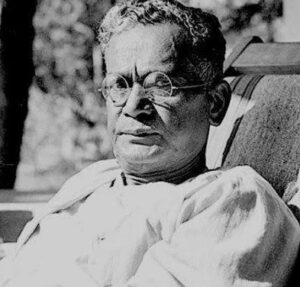 Boses’ art was distinct, profoundly influenced by the Ajanta Caves murals which created a benchmark for the ‘Indian style of painting.’ The style, connected with national awakening and independence, was pioneered by Abanindranath Tagore as a response to the Western art styles taught in art schools during the British Raj. It began in Kolkata and Santiniketan, reflecting Indian principles in Indian art, and later became known as the Bengal School of Art.
Boses’ art was distinct, profoundly influenced by the Ajanta Caves murals which created a benchmark for the ‘Indian style of painting.’ The style, connected with national awakening and independence, was pioneered by Abanindranath Tagore as a response to the Western art styles taught in art schools during the British Raj. It began in Kolkata and Santiniketan, reflecting Indian principles in Indian art, and later became known as the Bengal School of Art.
A lot lies inside
In brilliant egg tempera frescoes painted in mineral colours, scenes from Indian mythology are depicted in narrative panels and dynamic compositions that cover the walls of Kirti Mandir. Stylized figures tell stories passed down through the generations to an Indian.
While some of the frescoes are in excellent condition, others are flaking. However, these flaws caused by time and weather would not distract you from appreciating the visual attractiveness of this panel. Let’s explore the four thematic paintings.
Gangavatarana from Valmiki Ramayana
Remember the popular rock- cut sculpture ‘The descent of the Ganga’ from Mahabalipuram? Surely one would never forget this Pallava marvel if one has been there once. The account of Gangavatarana, or the descent of the River Ganga, appears in several ancient Hindu scriptures, including the Ramayana, penned by the Hindu philosopher Valmiki. Lord Shiva is associated with the descent.
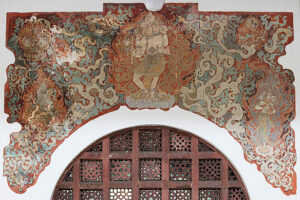 Shiva is depicted here with three faces, each representing a different aspect of time: past, present, and future. His five hands are holding the trident, a nectar bowl, poison, a conch, and a damaru. A reassuring gesture is made with the sixth hand. A flower-like garland of human skulls wraps over his arms and waist.
Shiva is depicted here with three faces, each representing a different aspect of time: past, present, and future. His five hands are holding the trident, a nectar bowl, poison, a conch, and a damaru. A reassuring gesture is made with the sixth hand. A flower-like garland of human skulls wraps over his arms and waist.
Brahma’s kamandal is in Shiva’s right. Ganga jal pours from it over his head, down to his feet. Ganga appears in a variety of forms. First, over Shiva’s head, then in the middle as Bhogavati, the underworld Ganga, and Mandakini, the celestial Ganga, and finally kneeling at Shiva’s feet.
Natir Puja
Rabindranath Tagore wrote and directed this dance-drama; Natir Puja, based on a Buddhist narrative. It tells the story of Sreemati, a dancer in Ajatashatru’s court.
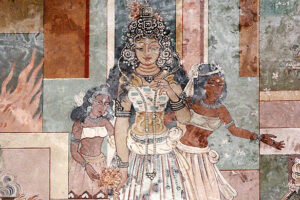 Following King Bimbesara and his younger son’s rejection of worldly charms in favour of meditation and prayers, Ajatashatru resolves to eradicate all remnants of Buddhism and impose Hinduism as the national religion. Meanwhile, Sreemati is a devout Buddhist who continues to practise against court restrictions. Sreemati one day is chosen to perform at the stupas during the Vasant Purnima celebrations. However, she becomes so immersed in her dancing that she begins to discard her robes and jewels one by one left only wearing the basic wrap of a female monk.
Following King Bimbesara and his younger son’s rejection of worldly charms in favour of meditation and prayers, Ajatashatru resolves to eradicate all remnants of Buddhism and impose Hinduism as the national religion. Meanwhile, Sreemati is a devout Buddhist who continues to practise against court restrictions. Sreemati one day is chosen to perform at the stupas during the Vasant Purnima celebrations. However, she becomes so immersed in her dancing that she begins to discard her robes and jewels one by one left only wearing the basic wrap of a female monk.
Mirabai
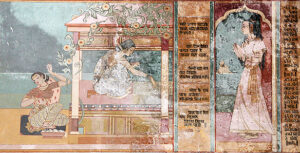 Lord Krishna’s famed disciple and mystic poet Mirabai’s life is also one of the themes of frescos. Mira is shown in full Marwari attire in one frame, immersed in meditation. In other, she is looking beyond a lake, her thoughts elsewhere. She is then seen leaving her house, clad in a white sari and holding an ektari, in the presence of other worshippers. The final frame depicts her at the Dwarkadheesh Temple, where legend says that this is the place where she dissolved and merged with the Krishna deity.
Lord Krishna’s famed disciple and mystic poet Mirabai’s life is also one of the themes of frescos. Mira is shown in full Marwari attire in one frame, immersed in meditation. In other, she is looking beyond a lake, her thoughts elsewhere. She is then seen leaving her house, clad in a white sari and holding an ektari, in the presence of other worshippers. The final frame depicts her at the Dwarkadheesh Temple, where legend says that this is the place where she dissolved and merged with the Krishna deity.
The mighty war: Mahabharata
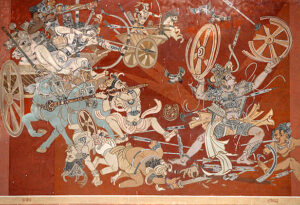 The last wall depicts the mighty war of Mahabharata, which was fought between the Kauravas and Pandavas. One frame depicts Krishna urging Arjun to battle as per the Bhagwad Gita’s teachings. Abhimanyu is seen surrounded by the Kaurava army, battling heroically without weapons to break the chakravyuha made by Dronacharya. While in the other frame Dhritarashtra and Queen Gandhari lament the death of their sons, seeing their bodies burning and turning to ashes.
The last wall depicts the mighty war of Mahabharata, which was fought between the Kauravas and Pandavas. One frame depicts Krishna urging Arjun to battle as per the Bhagwad Gita’s teachings. Abhimanyu is seen surrounded by the Kaurava army, battling heroically without weapons to break the chakravyuha made by Dronacharya. While in the other frame Dhritarashtra and Queen Gandhari lament the death of their sons, seeing their bodies burning and turning to ashes.

